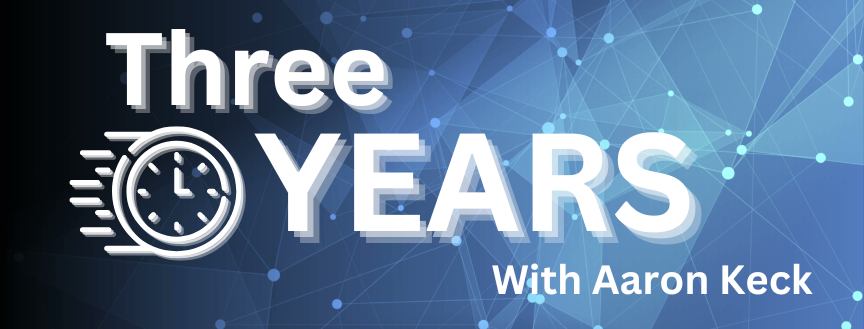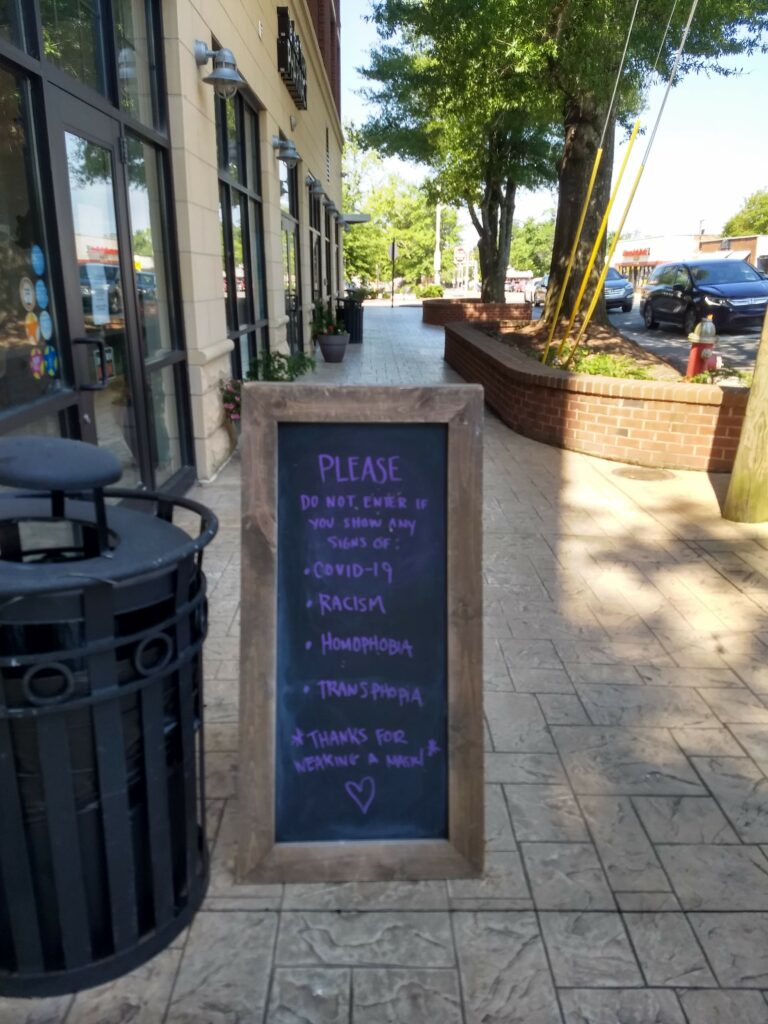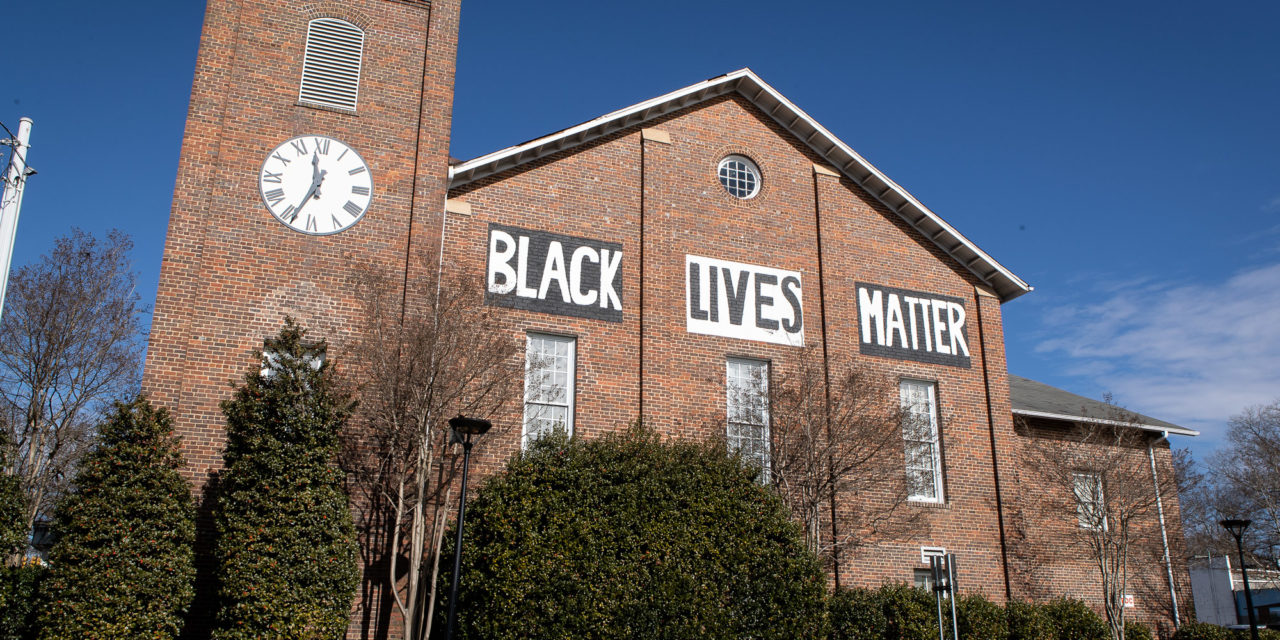In the spring of 2020, everything changed.
Everything changed first over COVID-19. People worked from home, others lost their jobs. Overnight, our plans changed. Our needs changed. And the organizations we counted on to meet those needs – they had to change as well.
And something else was happening too. The same week North Carolina closed its schools, a woman named Breonna Taylor was shot and killed by police in Louisville. Two months later, George Floyd was killed in Minneapolis. And as people flooded the streets in protest, once again, we realized things had to change.
It’s now been three years since that spring. What have we learned from our experience? What lessons have we taken away? What changes have we made? And which of those changes will last?
“Three Years” is a series by 97.9 The Hill’s Aaron Keck – looking back on our memories and lessons learned from our collective experience, drawn from conversations with numerous government officials, nonprofit heads, scholars and thought leaders in the Chapel Hill-Carrboro community.
Click here for the entire 15-part series.

Listen to Chapter 12:
Chapter 12: The Reckoning
“People really had to check themselves,” says state poet laureate Jaki Shelton Green. “All of us had to check ourselves. Are we a part of the problem? Or are we a part of the solution?”
I don’t know if you ever asked yourself that question, at any time in the last three years – watching the video of George Floyd’s murder, for instance, or seeing all the marches in the streets.
But one thing I’m learning, in all these conversations I’m having, is that lots and lots of businesses and organizations did ask themselves that question. And they did enact some real changes – some of them very productive, others less so.
“I’ve seen some very meaningful, innovative platforms,” says Green, “where organizations, corporations, are really examining their own integrity around racial justice and around equity. And I’ve also seen the other side: people commercializing and marketing and branding it, and it having no validity. I remember this bookstore (that) had a humongous banner on their roof that said ‘Black Lives Matter’ – and I remember going to the bookstore and being treated very, very badly. And I just laughed.”

July 13, 2020: the Tar Heel Town Pharmacy in Carrboro, summing up the whole vibe of the community at the time.
How much have we learned? How much have we changed, in the aftermath of 2020? How much are we different now, individually and collectively?
How different are you?
“Oh my God, I don’t even know where to start,” says UNC historian William Sturkey. “I’m learning all the time.”
We’re discussing the racial justice movement since 2020 – but of course he knows his history, so he knows it goes back way further than that.
“I was teaching college when Trayvon Martin was killed,” he says. “To me, Trayvon Martin is the starting point of something that we’re still very much in…
“In my lifetime, I’ve never been a part of a conversation about race in America like we’re (having) right now, in this moment,” he continues. And I’m seeing those conversations in all sorts of different places. I never would have expected the school of medicine, the school of business – like, all of these people are interested in talking about the history of race in this country. I’m getting invited to give grand rounds in the School of Medicine! That’s pretty interesting – I never imagined I would be invited to give a grand round in the pediatric department.”
“What’s an example of productive progress that you’ve seen?” I ask.
“One thing is that the history of race is so closely entwined to health care in this country,” he says. “If you were born in 1948, for example, you were 16 before the Civil Rights Act. And that’s the very same population who are experiencing a lot of health problems now, as they begin to age. So for somebody in medicine to be historically informed, about the disadvantages that people who were born in the era of Jim Crow show up to the hospital with – I think (that) can really help us think about how to make sure that we treat those people with a bit more care, perhaps, than we would if we didn’t know that history.”
And that awakening, he says, is not just happening among high level faculty: it’s also happening among his students, who feel closer now to historical events than ever before.
“There is an urgency to what we talk about,” he says. “Even though we’re further away from the time period that we study, it feels closer. I first felt this in 2017, when it seemed like a lot of students were interested in studying civil rights because it was the first time it really occurred to them that they could lose some of the rights that they had. They really thought, ‘okay, what are the things that we currently have that could be taken away and how do we fight for them?’
“Now, I’m teaching a class on the sixties – (and) when I first taught that class, no student had ever lived through a moment in this country when there was widespread racial unrest in the streets. But now every single one of them has.”
I heard the same thing from teacher and playwright Sonny Kelly, who says we are living through both the best and the worst of times: the worst of times because so many people are resisting having a serious conversation about race in America, but the best of times because so many others are pushing forward.
“Americans love to not look back,” Kelly says,
So when it comes to asking Americans to look back and think about what’s happened: we’ll put it in the history books, but it’s so rare that we’ll actually sit down and say, ‘wow, let’s mourn. Let’s mourn what we have done as a nation, and let’s acknowledge that it’s a part of us, and let’s do better going forward with that in mind, acknowledging it and naming it.’ And I feel like we have acknowledged and named some of the atrocities of our nation, (and) some of the patterns that we normally had not talked about.
It took seeing people like Ahmaud Arbery or George Floyd die in front of us, for us to realize (that) there’s a whole system, there’s a whole way of life that we have where – we look at George Floyd being kneeled on like a calf in a rodeo, and it’s not so surprising to us. I looked at that and – honestly, my son Sterling (is) Black, and I am Black, (and) we looked at that and the first thing we talked about was, ‘oh man, what did he do? What crime did he do?’ We weren’t thinking about the inhumanity! That’s a shame. That’s a part of my psyche. That’s a part of this country. That doesn’t make me evil, doesn’t make you evil – (but) I think this season of racial reckoning has been a time for us to really just start getting honest with ourselves…
I think it was Fred Rogers who said, ‘whatever is human is mentionable. If it’s mentionable, it’s manageable.’ Well, if you don’t mention it, you can’t manage it. You don’t name it, you can’t deal with it. So we’re naming stuff.
Who else is having those conversations, with each other and with themselves?
William Sturkey says he sees a lot of it on campus – and often from the people you least expect.
“One thing I’ve learned in the past couple years, that I don’t think I fully appreciated, is how much the alumni of this university care about what happens here, in a really unique way,” he says. “I’ve worked at Penn State, I attended Wisconsin and Ohio State. The alumni of those schools, they care very much about what happens on Saturdays in the fall – but they don’t care in the same way about what’s happening in the classroom. I’ve never seen anything like this. I get emails from people saying, ‘I’ve read about your course, I’m so happy people like you are there teaching.’ I have a parent of a student who wanted to do all the reading for the ‘60s class, even though she didn’t get to participate in the conversations.”
But amidst all the thinking and all the talking, how much are we seeing those thoughts and words turned into actions?
Jaki Shelton Green says it’s not happening as often as it should.
“If you still only have one person of color on your staff and that person has no voice, or you mute or erase that person – and these are stories I’m hearing from young professionals, people of color,” she says. “Their corporations have wonderful mission statements about equity and justice! And they’re just miserable.”
And in Chapel Hill, Delores Bailey of EmPOWERment, Inc, says she’s seeing organizations start to lose the sense of urgency that they had when they were making real commitments in 2020.
“People are starting to forget,” she says. “All of these companies that decided that they needed to have equity programs at the very beginning – they felt it, and they felt it hard, and they wanted to make sure they changed. Now, not so much. Especially in Chapel Hill. Especially in our town, Aaron.
“I honestly think we have a really good way of forgetting: give it a couple of weeks, give it a couple of months, give it two years, and you’ll forget about the division that is America. And that’s sad to me. White America’s got to come to the table and go, ‘it’s not all right. We really must have change.’ And it can’t just be two or three years. We’ve got to get ready to change America, and we’re not there yet. Unfortunately.”
And compounding that forgetting, William Sturkey says, is something else.
“One of the things that’s happening is this enormous wave of backlash,” he says.
Sadly, that’s not uncommon: whenever you have a social movement, you also have the reaction against it. In this case, that’s taken many forms: pressure on teachers who talk about race in America; attempts to rewrite textbooks and cancel courses; a widespread pushback against the equity efforts that brought Sturkey to the School of Medicine in the first place; and even bills that would ban schools from teaching about systemic racial disparities.
“I hope that people are able to settle on some sort of a common ideal that we need to have productive conversations about race in this country,” he says. “We can disagree about how to do that, but to just ban any sort of a conversation is utterly ridiculous.”
“Do you (ever) change or rethink the way that you’re teaching a class, based on if something like (the current backlash) is happening on the national level?” I ask.
“No,” he says. “Absolutely not. People that want to ban ideas and ban books are cowards. And if those people ever want to have a conversation about that, or come after me for what I teach, then I welcome the challenge. Because my ideas stand up. People that want to ban books and ban ideas are cowards. Let’s have a conversation about those ideas. Sure, we can disagree, but if you want to just outlaw them, then I think you are a fool.”
“What’s the historic context?” I ask. “What should people understand, historically, about what we’re seeing now?”
“One thing people need to understand historically about what we’re seeing now is that book banning and banning certain ideas has come up every single time there’s been a major racial reckoning in this country,” he says. “(During) the civil rights movement, (some states) were making public school teachers sign loyalty oaths, saying that they were not belonging to the NAACP. That was all over the place in the 1950s and 1960s, trying to ban certain ideas from public schools and public settings. And with abolitionism: I mean, my God, you couldn’t read David Walker’s Appeal, even though he was a native of North Carolina. You couldn’t get a copy of that in the 1830s here, and if you did, it was illegal.”
That’s another example of why I’ve come to think that studying history is both incredibly relieving and incredibly disturbing: relieving, because it reminds us that we’ve been through all this many times before; disturbing, because it teaches us that we’ll probably go through all this many times again.
So where does that leave us? What have we changed? What have we learned?
Only one thing is certain: the answer we give today will not be the answer we give five years from now. Everything is always in flux, and this conversation about race in America has been ongoing for centuries. All we can do is try to learn, and try to grow, and try to push forward with hope.
“Now it’s really hard to go back to that gilded perspective,” says Chapel Hill Town Council member Tai Huynh. “You can’t go back to how we were three years ago, and say ‘we live in a post-racial society, race doesn’t have an impact on your outcomes as a person in America.’ And I’m hoping that that will stick with us permanently.”
Click here for the entire 15-part series.
Featured image: this “Black Lives Matter” sign remains on the side of Carrboro’s Century Center.
Chapelboro.com does not charge subscription fees, and you can directly support our efforts in local journalism here. Want more of what you see on Chapelboro? Let us bring free local news and community information to you by signing up for our biweekly newsletter.


